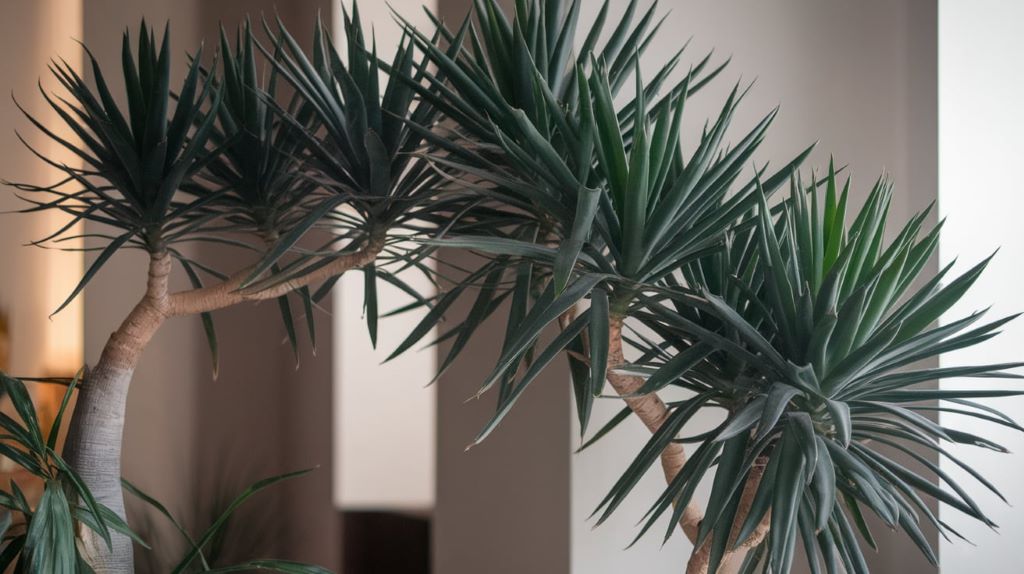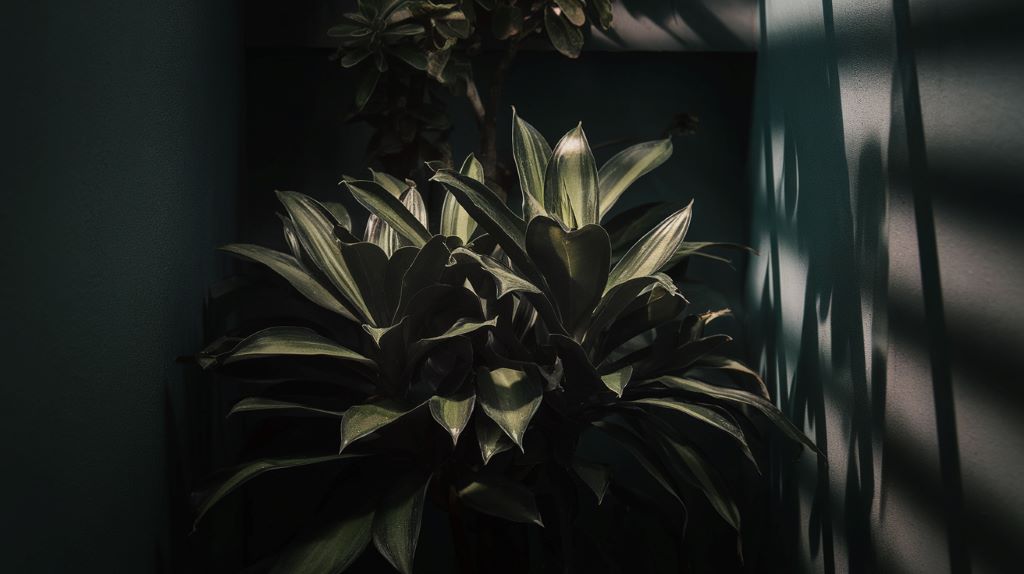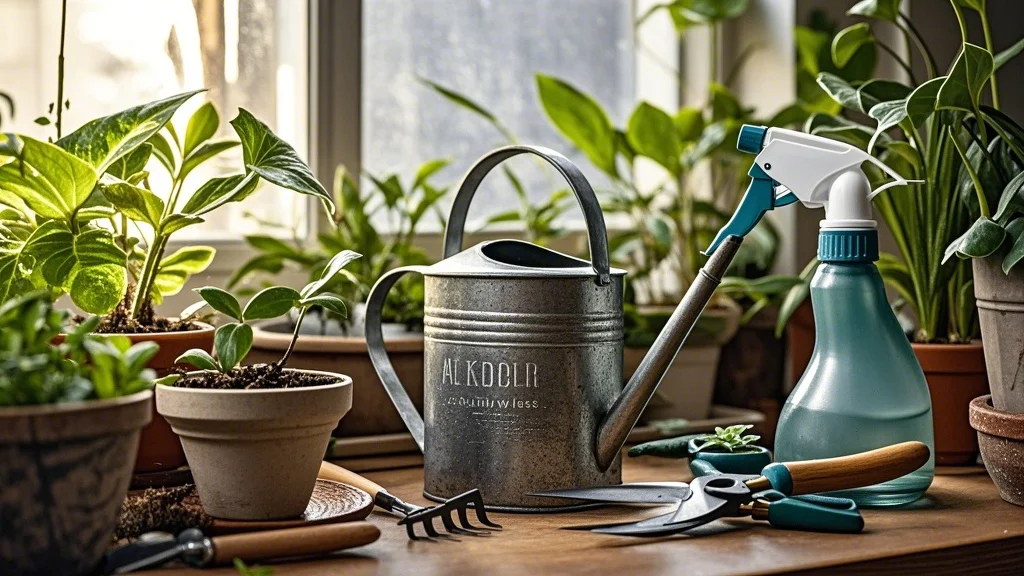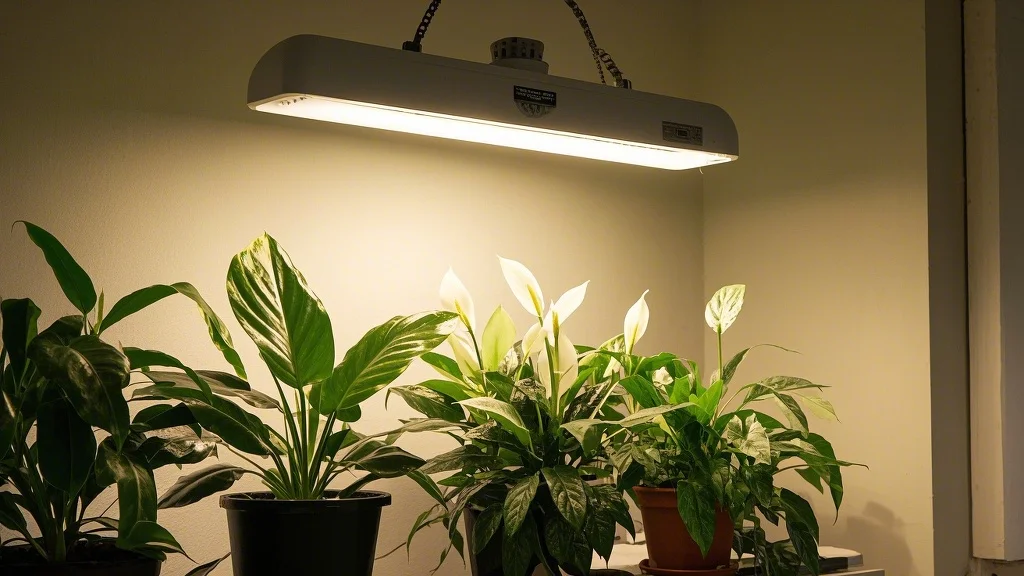If you’ve struggled to keep houseplants alive in your dim apartment or office, the Cast Iron Plant (Aspidistra elatior) might be your perfect match. True to its name, this resilient houseplant can withstand conditions that would kill most other indoor plants. With its elegant, arching dark green leaves and remarkable tolerance for neglect, the Cast Iron Plant has earned its reputation as one of the most indestructible houseplants available.
For urban dwellers with limited natural light or beginners still developing their green thumb, this plant offers a forgiving introduction to indoor gardening. Native to the forest floors of Japan and Taiwan, the Cast Iron Plant evolved to thrive in deep shade, making it exceptionally well-adapted to indoor environments where light is scarce.
In this comprehensive guide, we’ll explore everything you need to know about Cast Iron Plant care, from its light requirements and watering needs to troubleshooting common issues.
Contents
About the Cast Iron Plant

Background and Origins
The Cast Iron Plant (Aspidistra elatior) belongs to the lily family (Asparagaceae) and is native to the forest floors of Japan and Taiwan. It gained popularity during the Victorian era when it proved capable of surviving in gas-lit homes with poor air quality and minimal natural light. This historical resilience earned it the nickname “Bar Room Plant” as it could even withstand cigarette smoke and irregular care in dimly lit taverns.
In its natural habitat, the Cast Iron Plant grows beneath dense forest canopies, receiving only dappled sunlight. This evolutionary background explains its extraordinary shade tolerance and why it performs so well in low-light indoor environments.
Physical Characteristics
The Cast Iron Plant features:
- Foliage: Long, glossy, lance-shaped leaves that grow directly from the soil
- Size: Typically reaches 2-3 feet tall and 1-2 feet wide when mature
- Growth rate: Extremely slow-growing (a virtue for space-limited apartments)
- Flowers: Produces small, inconspicuous purple-brown flowers near the soil level, though flowering is rare indoors
- Varieties: While the standard variety has solid green leaves, variegated forms with white or yellow stripes are also available
The plant grows from rhizomes (underground stems) that slowly spread over time, eventually forming a dense clump of foliage.
Cast Iron Plant Care Guide
Light Requirements
Ideal conditions: The Cast Iron Plant thrives in low to medium indirect light, making it perfect for:
- North-facing windows
- Interior rooms with minimal natural light
- Spaces several feet away from east or west windows
- Offices with only fluorescent lighting
Unlike most houseplants that merely tolerate low light, the Cast Iron Plant actively prefers these shadier conditions. In fact, too much direct sunlight can damage the leaves, causing them to yellow or develop brown scorched patches.
Pro tip: While Cast Iron Plants can survive in extremely low light, they will grow slightly faster and maintain better color in moderate indirect light. If your space is exceptionally dark, consider supplementing with a low-intensity grow light positioned several feet away.
Watering Needs
The Cast Iron Plant’s drought tolerance is legendary, making it ideal for forgetful waterers or frequent travelers. The key to success is avoiding overwatering, which is the most common way to harm this otherwise bulletproof plant.
Watering guidelines:
- Allow the soil to dry out completely between waterings
- In low light conditions, this might mean watering only once every 2-3 weeks
- During winter, reduce watering to once a month or less
- When in doubt, it’s better to underwater than overwater
How to check: Press your finger 2 inches into the soil—if it feels completely dry, it’s time to water. If you detect any moisture, wait longer.
When you do water, do so thoroughly until water drains from the bottom of the pot. Empty any excess water from the saucer to prevent root rot.
Soil and Potting
The Cast Iron Plant isn’t particularly fussy about soil, but proper drainage is essential to prevent root rot.
Ideal soil mix:
- Standard potting soil with additional perlite or coarse sand for drainage
- Or use a mix of 2 parts potting soil, 1 part perlite, and 1 part bark
Potting considerations:
- Choose a pot with drainage holes
- Select a container only 1-2 inches larger than the root ball when repotting
- Terracotta pots work well as they allow soil to dry more quickly between waterings
Temperature and Humidity
One of the many reasons the Cast Iron Plant excels as an apartment plant is its adaptability to normal indoor conditions.
Temperature tolerance:
- Prefers temperatures between 60-75°F (15-24°C)
- Can tolerate occasional dips to 45°F (7°C)
- Avoid placing near drafty windows or heating vents
Humidity requirements:
- Adapts to normal indoor humidity levels (30-50%)
- No need for special humidifiers or misting
- Can handle dry winter air better than most houseplants
This adaptability makes the Cast Iron Plant perfect for apartments with radiator heat or air conditioning, where humidity levels often fluctuate.
Fertilizing
Given its slow growth rate, the Cast Iron Plant requires minimal fertilization.
Fertilizing schedule:
- Apply a balanced houseplant fertilizer diluted to half-strength once in spring and once in summer
- Skip fertilizing in fall and winter when growth naturally slows
- If your plant is in very low light, fertilize just once a year in spring
Over-fertilizing can lead to salt buildup and leaf burn, so when in doubt, less is more with this low-maintenance plant.
Pruning and Maintenance
The Cast Iron Plant requires very little pruning or maintenance.
Basic care:
- Remove any brown or yellow leaves by cutting them at the base with clean scissors
- Wipe dust from leaves occasionally with a damp cloth to keep them looking glossy
- Divide overgrown plants every 3-5 years if desired
The slow growth rate means you’ll rarely need to repot—typically only every 3-5 years when the plant becomes root-bound.
Propagation Methods
The most reliable way to propagate a Cast Iron Plant is through division during repotting.
Division process:
- Remove the plant from its pot
- Gently separate the rhizomes, ensuring each division has several leaves and roots
- Pot each division in appropriate soil mix
- Water thoroughly and place in indirect light
- Be patient—new growth may take several months to appear
While leaf cuttings are possible, they’re extremely slow and less reliable than division.
Common Problems and Solutions
Despite its resilience, the Cast Iron Plant can occasionally experience issues. Here’s how to address them:
Yellow Leaves
Possible causes and solutions:
- Overwatering: Most common cause. Allow soil to dry completely between waterings and ensure good drainage.
- Too much direct sunlight: Move to a shadier location.
- Nutrient deficiency: Apply diluted fertilizer if the plant hasn’t been fed in over a year.
Brown Leaf Tips or Edges
Possible causes and solutions:
- Low humidity: While tolerant of dry air, extremely low humidity can cause brown tips. Move away from heating vents.
- Salt buildup: Flush the soil thoroughly with water to remove fertilizer salts.
- Underwatering: If the entire plant is extremely dry, increase watering slightly.
Pest Issues
The Cast Iron Plant is remarkably pest-resistant, but occasionally may attract:
- Spider mites: Indicated by fine webbing and stippled leaves. Treat with insecticidal soap or neem oil.
- Scale insects: Appear as small brown bumps on stems or leaf undersides. Remove with alcohol-dipped cotton swab.
- Mealybugs: White cottony masses in leaf axils. Treat with insecticidal soap.
Pest problems are rare with this plant, especially compared to more delicate houseplants.
Benefits of Cast Iron Plants in Urban Spaces
Beyond their ease of care, Cast Iron Plants offer several advantages for city dwellers:
Air Purification
Like many houseplants, Cast Iron Plants help filter indoor air pollutants, though they work more slowly than faster-growing species. Their longevity means they provide this benefit consistently for many years.
Space Efficiency
The slow growth rate and upright habit make Cast Iron Plants ideal for small apartments where space is at a premium. A mature specimen in a 10-inch pot can serve as a substantial floor plant without overtaking your living space.
Longevity
Perhaps the greatest advantage of the Cast Iron Plant is its exceptional lifespan. With proper care, these plants can thrive for decades—some specimens have been known to last 50+ years, becoming family heirlooms passed between generations.
Styling Tips for Cast Iron Plants
The elegant, architectural form of the Cast Iron Plant makes it versatile for various interior design styles:
Placement Ideas
- Dark corners: Brighten up those impossible-to-decorate dark corners
- Bathrooms: Thrives in low light and humid conditions
- Bedrooms: Tolerates lower light levels common in sleeping spaces
- Under stairwells: Makes use of often-wasted space
- Office environments: Survives with only fluorescent lighting
Design Combinations
- Pair with other low-light plants like ZZ plants or pothos for a varied display
- Use as a backdrop for smaller, more colorful plants
- Place in minimalist planters for a modern look
- Combine with vintage containers for a classic feel
The dark green foliage provides an excellent contrast to light-colored walls and complements both warm and cool color schemes.
Varieties and Similar Plants
While the standard Cast Iron Plant with solid green leaves is most common, several varieties offer interesting alternatives:
Cast Iron Plant Varieties
- Aspidistra elatior ‘Variegata’: Features cream or white stripes
- Aspidistra elatior ‘Milky Way’: Displays white speckles across the leaves
- Aspidistra elatior ‘Asahi’: Has white leaf tips that look dipped in paint
Similar Low-Light Plants
If you enjoy the Cast Iron Plant, consider these other extremely low-light tolerant options:
- ZZ Plant (Zamioculcas zamiifolia): Another nearly indestructible option
- Snake Plant (Sansevieria trifasciata): Upright, architectural leaves
- Chinese Evergreen (Aglaonema): Offers more color variation
- Parlor Palm (Chamaedorea elegans): Provides a feathery texture
Conclusion
The Cast Iron Plant lives up to its name as one of the most resilient houseplants available, making it perfect for low-light apartments and novice plant parents. Its ability to thrive in conditions that would kill most other plants—combined with its elegant appearance and minimal care requirements—has earned it a well-deserved place in indoor gardening.
For urban dwellers struggling with dim lighting conditions or those seeking a truly low-maintenance houseplant, the Cast Iron Plant offers the perfect solution. While it won’t grow quickly or produce showy flowers, its steadfast presence and glossy foliage provide a touch of living greenery in even the most challenging indoor environments.
With proper care (which mainly involves restraint in watering), your Cast Iron Plant can become a long-term companion in your home, potentially outlasting many of your other possessions and serving as a living reminder that sometimes strength comes in the form of quiet resilience rather than flashy displays.
Looking for more low-light plant options for your urban space? Visit OwnGardens.com for expert guides on indoor gardening, product recommendations, and practical advice tailored to city dwellers.










